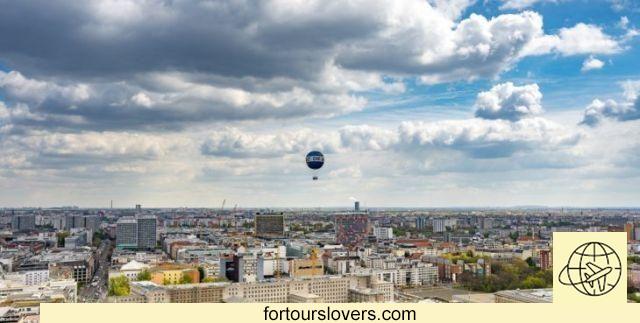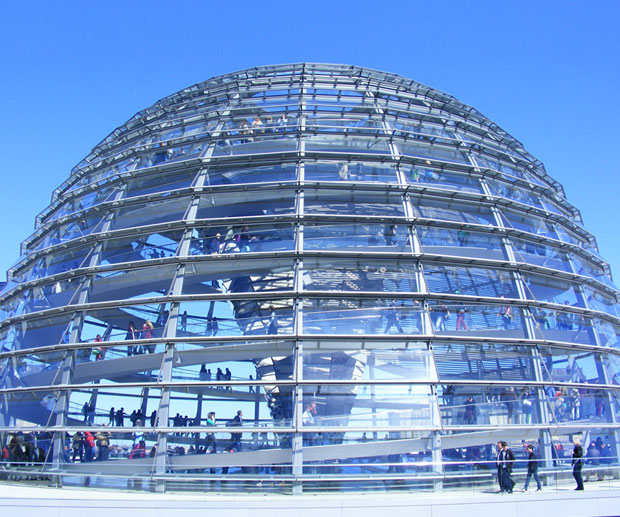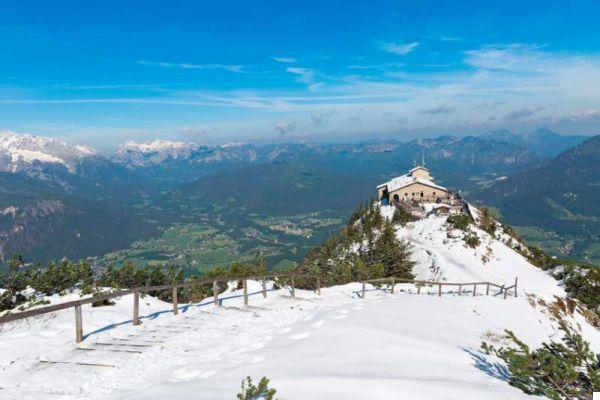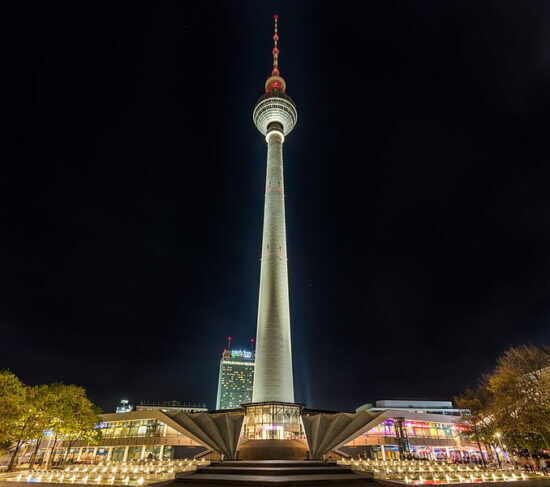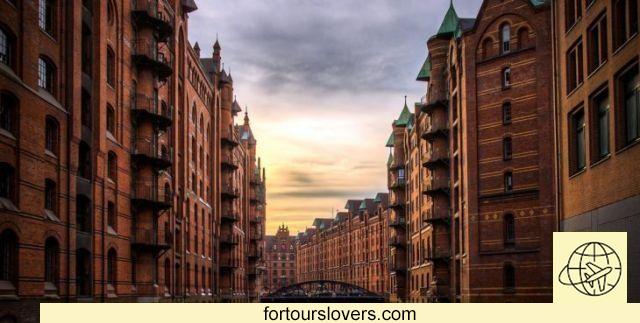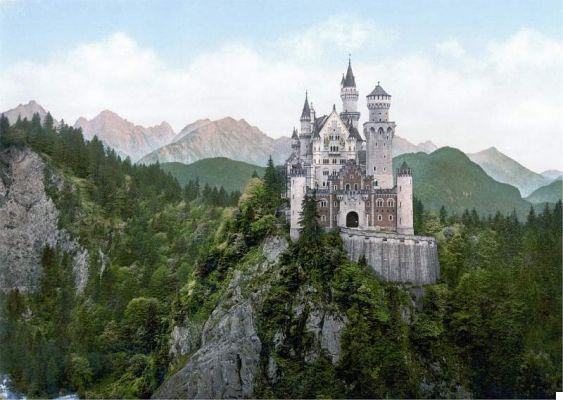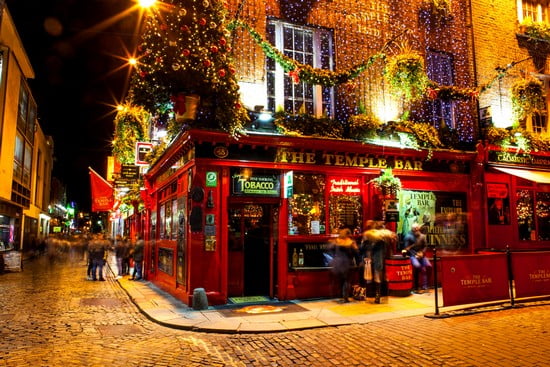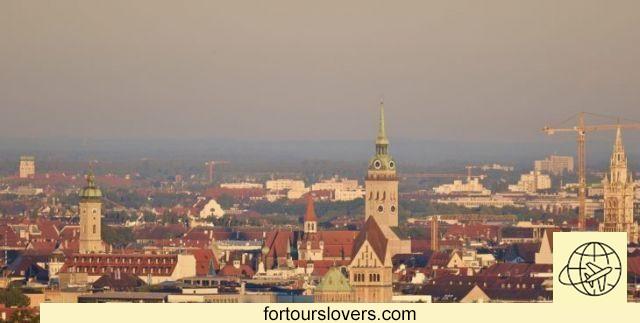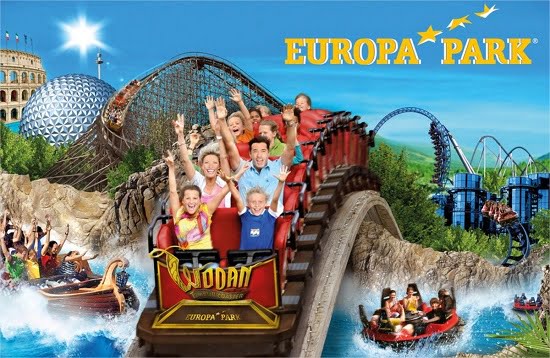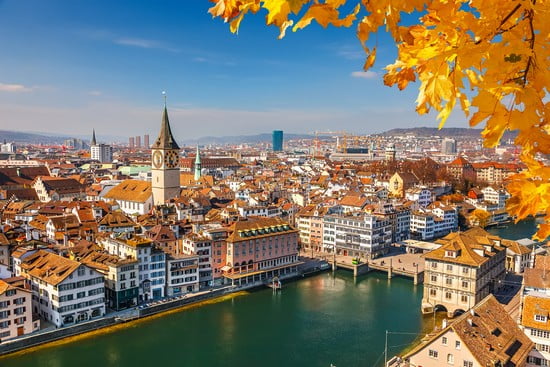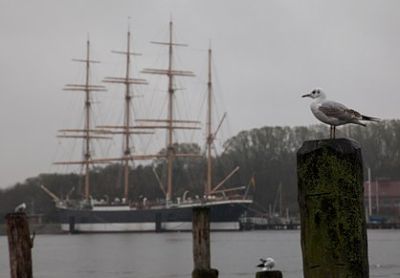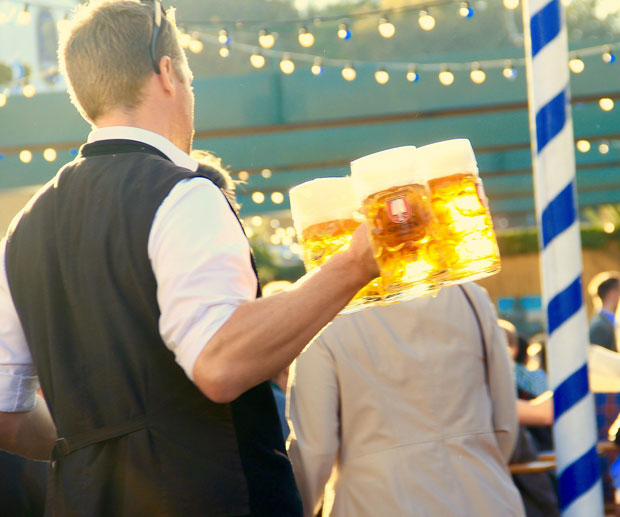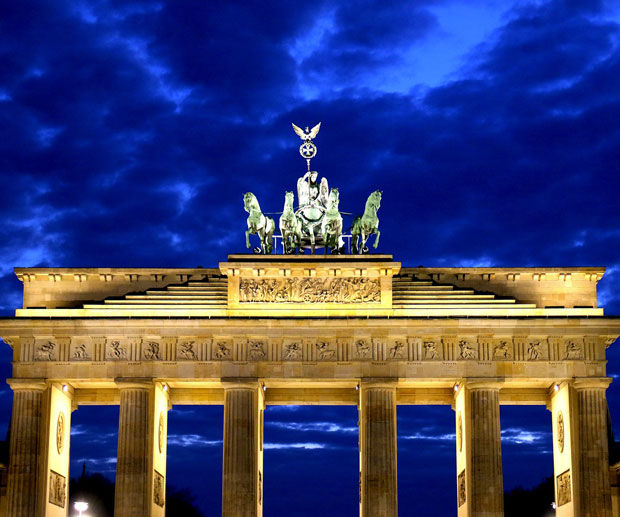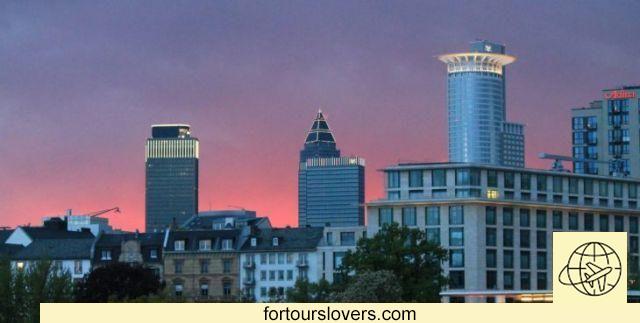
Frankfurt
11 things to do and see in Frankfurt and 2 not to doCan you be a metropolis and a country at the same time? It is a question that we have already addressed on several occasions but which in the case of Frankfurt arises even more evidently. The answer, in any case, is yes. Frankfurt, in fact, while boasting a number of level firsts (third European airport; headquarters of the European Central Bank; third world stock market; leadership in the chemical industry; motor show, etc.) on a human scale, very easy to get around both on foot and by public transport. Not only that, because the status of a metropolis also passes from the level of multiculturalism and, even from this point of view, the city is absolutely avant-garde. The high foreign presence did not prevent the conservation of the traditions, demonstrating that one can be open and inclusive without having to give up one's identity. The secret, perhaps, lies in the great consideration in which knowledge is held as a factor of social progress. We have already said about scientific culture, referring to the strategic role of the chemical industry, but woe to forget the myth Frankfurt school. Since the 20s, the faculties of Sociology and Philosophy in Frankfurt have influenced the European and world debate. Especially in the 60s and 70s the theories of thinkers like Ornament, Horkheimer e Marcuse they influenced Western public opinion, providing European and American students with the dialectical tools to carry on the protests of those years. It is therefore not surprising that Frankfurt also excels in the fields of publishing (the well-known daily Frankfurter Allgemeine Zeitung) and advertising. In conclusion, a city for demanding travelers, but above all curious, eager to get some more answers on the direction of contemporary life. Below we go to see the main attractions of Frankfurt. Happy reading.
1 Römerberg
Römerberg is the main square in Frankfurt, as well as start point ideal for a visit to the city. The square is surrounded by characteristic buildings with wooden beams built between the XNUMXth and XNUMXth centuries. Among these the most beautiful and famous of all is undoubtedly Town hall, the city hall. Rathaus, or Römer, as it is more commonly called by the inhabitants of Frankfurt who have a very close relationship with this building (in reality, the Town Hall has also incorporated the adjacent buildings), well beyond the administrative aspects. The reason is that conciliaboli and banquets took place in the main hall of the palace, which led to the appointment of the Holy Roman Emperor. Not surprisingly, the Kaisersaal (trad. "Hall of the Emperors") with the portraits of the 52 emperors of the Holy Roman Empire is the highlight of the visit of the Römer. On the outside, however, the Fountain of Justice. Sculpture - Gerechtigkeitsbrunnen, in German - is located in the center of the square and was to symbolically oversee the activities of the merchants who traded their goods below. To be seen!
2 Goethehaus
Among the many "firsts" of Frankfurt there is also that of being there birthplace of Johann Wolfgang von Goethe, one of the greatest exponents of world literature, by far the greatest German writer of all time. Goethe was born at 12 noon on 28 August 1749 at 23 Großer Hirschgraben. A bourgeois house, on three levels, where the writer lived with his parents and his sister Cornelia. In reality, what we admire today is a reconstruction of the Goethe family home, since the original house (which the writer's mother had also sold in 1795) was destroyed by bombing during the Second World War. But, as said about the Römer, the inhabitants of Frankfurt have a special bond with their symbols and therefore, once the war was over, they immediately restructured the house-museum.
For the orari di apertura of the Goethehaus see table.
| Days | Working Time |
| Mon - Sat | 10:00 18:00 |
| Sun - Fes | 10:00 17:30 |
For more information on the history, prices and methods of visiting consult the Official site: www.goethehaus-frankfurt.de (English version available).
3 Kaiserdom
Despite being "only" a Collegiate, in the consideration of the inhabitants of Frankfurt the Church of San Bartolomeo is considered like a Cathedral. The reason is that 10 Germanic emperors of the Holy Roman Empire were crowned inside this sacred building, not far from Römerberg square. The circumstance also explains the sui generis form of the church that it presents itself with 3 very short naves for the benefit of transept which instead results large. The reason is easily understood: the transept was to house all the official representatives authorized to attend the coronation ceremony. For the rest, the Kaiserdom has kept the original intact over the centuries gothic imprint. Originally, since in 1867 a violent fire devastated a large part of the church which, it must be said, was quickly restored. Similarly, the violent bombings of the Second World War seriously compromised the structure but, even in this case, the reconstruction was quick and, more importantly, in line with the initial Gothic imprint. In short, the fidelity to city symbols it is one of the most significant aspects of the genius loci of Frankfurt. An aspect that in addition to making a difference from a historical-cultural point of view, is also the basis of the city's tourist fortunes. To be seen!
For more information on the Kaiserdom visit the Official site: www.dom-frankfurt.de
4 Paulskirche
There are buildings that make the history of a city and others, instead, the history of an entire nation. The deconsecrated church of San Paolo in Frankfurt belongs to this second category. Inside, in fact, it met for a year - from May 1848 to May 1849 - on first parliament of united Germany, instructed to give a Liberal constitution to the country. Before this event, the church of San Paolo, in the center of the homonymous square (Paulsplatz), observed the Protestant liturgy and in 1852, four years after the parliamentary experience, he resumed doing so. World War II, however, changed things again. The historic center of Frankfurt was heavily damaged and when it came time to renovate the Paulskirche it was considered more convenient to make it a democracy monument on the basis of the events that had seen it as protagonist the previous century. The discussions of the Frankfurt Parliament, in fact, mainly concerned the general principles and fundamental human rights that the then nascent German state should have acquired. Therefore, 1848 was a year of strong ideal tension that tried to recover by making the church the venue for international cultural events such as the literary prize dedicated to Goethe which is awarded every three years. Opening time every day from 10: 00 to 17: 00. Free admission.
5 Städel Museum
If the time available is short and you are in the position of having to choose which of the many museums in Frankfurt to visit, the answer is undoubtedly the Städel Museum. Founded in 1815 by banker Johan Friedrich Städel, this museum offers a comprehensive overview of 700 years of European art history. 3000 paintings, 600 sculptures, thousands of photographs, drawings and graphic works that span a time span ranging from the Middle Ages to contemporary art with the likes of Botticelli, Rembrandt, Verneer, Monet, Beckmann, Renoir, Manet, Picasso etc.. Alongside the permanent, they are periodically organized temporary exhibitions with the best of German and European art in circulation. In short, the Städel Museum is truly one unmissable stop of a visit to Frankfurt.
For the orari di apertura see the table:
| Days | Working Time |
| Mon | closed |
| Tue - Wed | 10:00 18:00 |
| Thu - Fri | 10:00 21:00 |
| Sat - Sun | 10:00 18:00 |
For more information on prices and how to visit, consult the Official site: www.staedelmuseum.de (English version available).
6 MMK - Museum für Moderne Kunst
Previously we have indicated to visit at least the Städel, especially if the stay is short. If, on the other hand, the time available is a little more, it is also worth seeing the Museum of Contemporary Art (Museum für Moderne Kunst) which the inhabitants of Frankfurt have affectionately renamed "Tortenstück" (trad. "Slice of cake") for its characteristic triangular shape. Inaugurated in 1991, the MMK took just a few years to carve out an important space among the contemporary art museums in Europe, becoming an essential reference point for the city of Frankfurt. 5000 works present for a time span that goes from the 60s of the last century to the present day. Obviously there is no shortage temporary exhibitions which, in addition to being housed in the main structure, are often presented in two other museum spaces (MMK2 and MMK3) made available by the generous bequests of the financial companies in the city. As for the MMK1, what is most striking is the dialectical relationship between the work and the space that hosts it. Not only that, because in addition to the works, the rooms, about forty in all, are also related to each other. Count the different proportions and different plays of light between one environment and another. In short, the Museum für Moderne Kunst is a beautiful one cultural reality halfway between architecture and art, and if there is a chance, it is absolutely worth a visit.
For the orari di apertura see the tables:
| MMK1 / MMK3 | |
| Days | Working Time |
| Mon | closed |
| Mar | 10:00 18:00 |
| More | 10:00 20:00 |
| Thu-Sun | 10:00 18:00 |
| MMK2 | |
| Days | Working Time |
| Mon | closed |
| Mar | 11:00 18:00 |
| More | 11:00 20:00 |
| Thu-Sun | 11:00 18:00 |
More information on Official site: mmk-frankfurt.de (English version available).
7 The Skyscrapers
Frankfurt, as mentioned at the beginning, is a city that looks to the future without denying its past. It is a discourse that affects various fields of city life, not least thebuilding. With the progressive affirmation of the financial power, in fact, we began to build more and more in height, to the point that the city was renamed "Mainhattan", playing on the one hand on the presence of River Main, on the other hand on the similarity with most densely populated district (Manhattan) of New York. Today there are about a hundred skyscrapers that draw the Frankfurt skyline, with a variable height between 300 (the tallest building is that of the Commerzbank) and 180 meters. The only one open to the public is the Main Tower, the skyscraper that houses the offices of Helaba commercial bank (Landesbank Hessen Thüringen). The building has a observation platform about 200 meters high from which you can admire the panorama of Frankfurt.
For the access times see the table.
| Days | Winter Hours | Working Time summer |
| Sun-Thurs | 10:00 19:00 |
10:00 21:00 |
| Fri-Sat | 10:00 21:00 |
10:00 23:00 |
For more information on prices, visit methods and other recreational activities inside the Main Tower consult the Official site: www.maintower.de (English version available).
8 Naturmuseum Senckenberg
Frankfurt is a city that has always held knowledge in high regard. The humanistic one, as shown by the worldwide prestige of the faculties of Sociology and Philosophy, but also the scientific one, of which the most evident trace is - as we mentioned at the beginning - the primacy of the chemical industry. Therefore, one could not miss in the city natural History Museum able to retrace the main stages dell 'evolutionand biologyand paleontology and geology. A complete museum that fascinates adults and children for its rich collection of animals from every age of the earth. Great prominence, as is easily understood, at different dinosaur species, so much so that outside the building there are some waiting for visitors full size reproductions of these prehistoric animals. Watch out also for the skeleton of Australopithecus afarensis, hominid who lived in Africa millions of years ago, whose peculiarity consisted in the ability to combine standing position and climbing ability.
For the orari di apertura of the Naturmuseum Senckenberg see table.
| Days | Working Time |
| Mon-Mar | 09:00 17:00 |
| More | 09:00 20:00 |
| Thu-Fri | 09:00 17:00 |
| Sat-Sun | 09:00 18:00 |
More information on Official site: www.senckenberg.de (English version available).
9 Palmengarten
Steel, glass and skyscrapers are only part of the image of Frankfurt. As in the rest of Germany, the issue of public parks is also held in high regard here. In the city there is no shortage of parks where you can relax, jog and other outdoor activities (the most famous is the Stadtwald), as well as a botanical garden of international level which attracts thousands of visitors every year, far beyond the audience of enthusiasts alone. We are talking about the Palm Garden, botanical garden of beyond 30 hectares, with a large area organized in greenhouses. The foundation of the garden dates back to 1868, the year in which through the formula of widespread shareholding, a group of inhabitants of Frankfurt bought from the Duke of Nassau a rich collection of exotic plants which went to constitute the original nucleus of the garden. Garden that has grown considerably since that moment, despite the significant parentheses of the two world wars and the economic difficulties that exploded in the 30s. Even the 50s were not easy even if, thanks to community funding and the renewed munificence of a part of the city bourgeoisie, already in the following decade things for the Palmengarten began to look good again. In addition to the collection of exotic plants, themed areas and the beautiful rose garden, the Frankfurt botanical garden houses a small lake, a stage for theater show and a space reserved for concerts by jazz and chamber music. In short, a place where the love for plants and that for art interpenetrate, creating a wonderful scenery that is worth admiring up close.
For the orari di apertura see the table.
| Months | Working Time |
| Feb-Oct | 09:00 18:00 |
| Nov-Jan | 09:00 16:00 |
More information on Official site: www.palmengarten.de (English version available).
10 Apflelwein, the cider from Frankfurt
Frankfurt's gastronomy reflects the multicultural soul of the city. In short, one international catering (Italian cuisine is well represented) for an equally international audience of customers. Nonetheless, there remains space for tradition. Pork ribs, sausages, cheeses still represent, together with cider, the typical dishes of the city. Especially the cider (Apfelwein), apple wine which seems to have already been known at the time of Charlemagne. Legend has it that its spread coincided with a vine disease. In the impossibility of producing wine, an alternative was therefore thought of which, over time, also due to climate change, remained the only solution available. Frankfurt cider is served in characteristics earthenware jugs (Bembel) and Sachsenhausen district, on the southern bank of the Main, is considered the stronghold of this drink. Drink of which, of course, there are different varieties and grades for which it is advisable not to overdo it.
11 Boat trips on the Main
Another way of getting to know Frankfurt is surf the riverside. Several companies make the hiking on the Main, as well as different are the formulas available: give it short trips that take an hour or so away, ai day trips which also include the surrounding villages in the visit. To find out more visit the place: www.primus-linie.de (English version available).
1 Do not violate the rules of civil coexistence
Do not get on public transport without a ticket; do not park your car in the places reserved for residents; Do not mess; respect the queue etc.. Those listed are all general rules of behavior which, therefore, in principle, apply everywhere. The point is that in Germany, but almost everywhere in Northern Europe, whoever "sgarra" is pointed out and, if the behavior includes an administrative sanction, one can be sure that the fine will come. Frankfurt is no exception from this point of view, so it has to behave in accordance with expectations.
2 Don't overdo the cider
We have already said it, but it is good to repeat it. If you are intrigued bycider try it, but in moderation. More than the risk of being drunk (which is also an alcoholic drink), we should not underestimate the risk disaccustom of the organism with cider. Therefore it is preferable to start with the spritz version elongated with mineral water.





